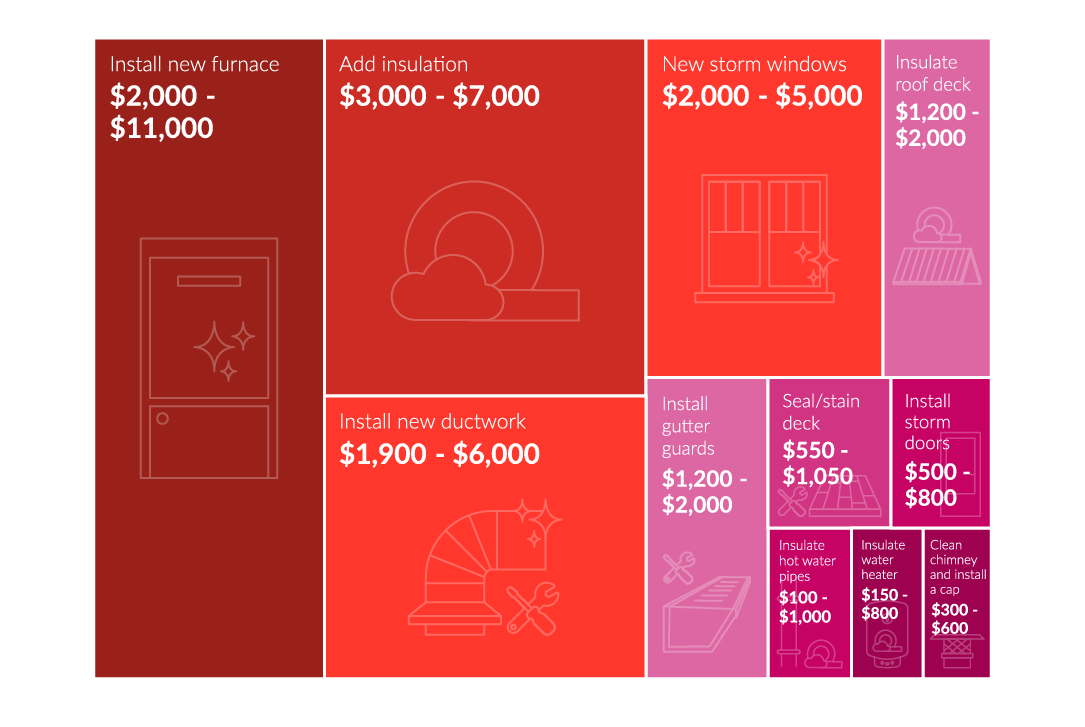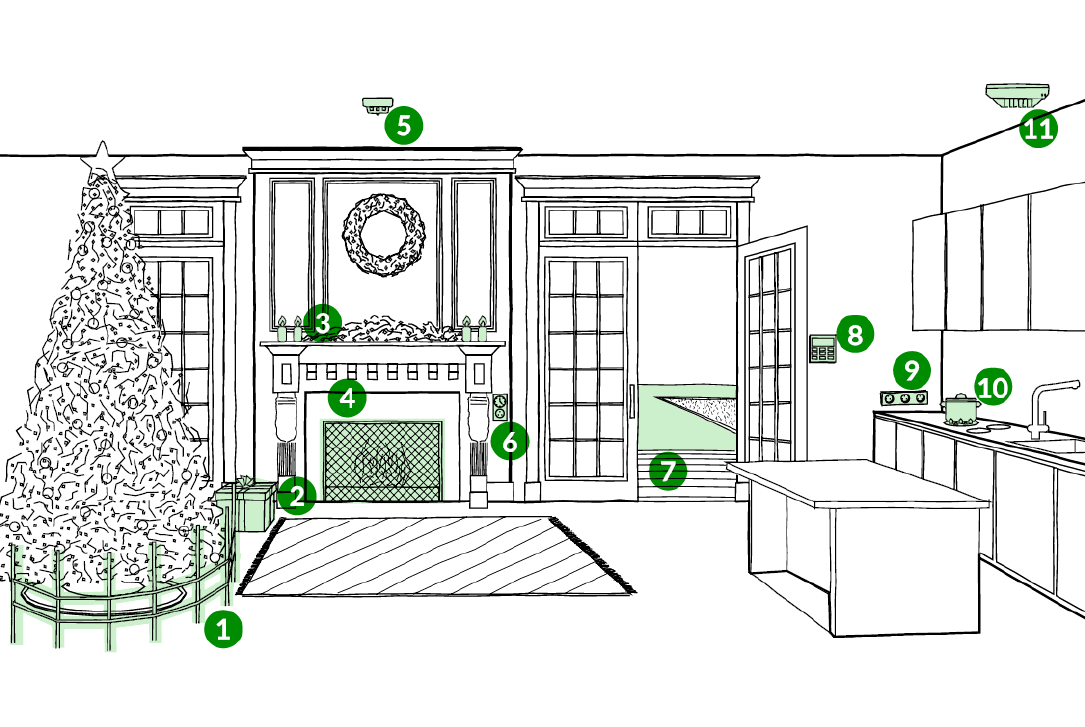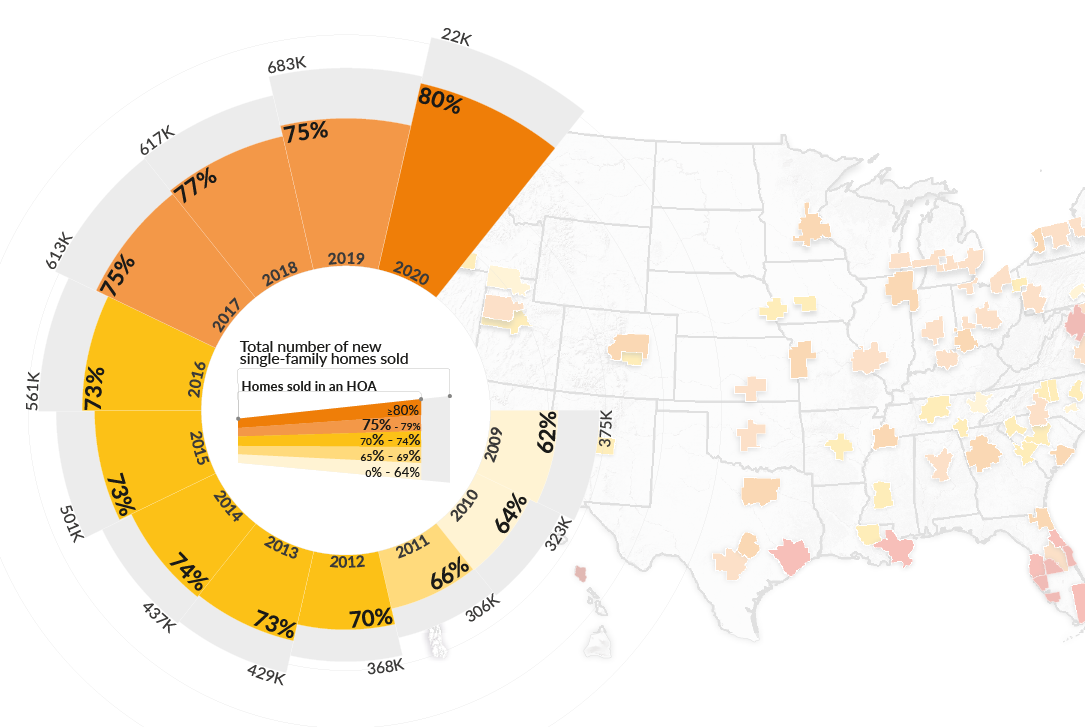Energy bills are a constant in most people’s lives. Each month, you’ll receive bills for electricity, as well as for whatever fuel you use for things like heating your home, cooking, or hot water. Energy bills have been on the rise, which means that for many people, it can be a good idea to take a look at what uses the most energy at home. People are also becoming more concerned about the effects of climate change and the emissions they are contributing, which in turn can spur them on to want to cut energy usage in their own homes. Once you know where the biggest energy expenditures are, you can then take steps to help save energy and money each month.
We’ll show you the appliances that are using the most energy each month according to the US Energy Information Administration (EIA), and give you some tips on how you can find different ways to save.

The above graphic is a breakdown of information taken from the EIA Annual Energy Outlook Report from 2021, Residential Sector Key Indicators and Consumption, showing in one chart how much of the energy you use each month is going to each major, common appliance in the home. The EIA makes projections on energy usage based on data gathered from different regions. They gather the average consumption of electricity as well as fossil fuels in each area, and track how much of these are being used in various regions, as well as by the expenditure of various household appliances. They measure the amount of energy used in quads, which is a unit used for describing the quantity of national and world energy resources. It equals 1 quadrillion British thermal units (BTUs). We calculated the percentage of total energy consumption by end use.
As you can see, the biggest single source of energy consumption by far in the home is tied to heating, which uses more than 30% of the energy consumed in homes. This is followed by “Other Uses”: a mixture of smaller appliances that are not listed in the other sections (electric and electronic devices, heating elements, motors, outdoor grills, natural gas and propane-fueled lights, pool heaters, spa heaters, and backup electricity generators).
These appliances on their own do not make a significant enough impact to be noted, although in total they represent 26.2% of the energy use. Beyond space heating and other uses, water heating takes the next biggest piece of the pie at more than 13%, followed by the appliances used to cool your home, which uses 10.7% of the energy. Refrigeration, clothes drying, lighting, televisions and other related equipment make up the next tier of energy consumption. Finally, things like computers, freezers, cooking, washing machines, dishwashers, and the furnace and boiler fans and circulatory systems account for the rest.
As you can see, while many appliances don’t make a big impact on your daily energy consumption on their own, together they can add up to a significant amount. You can also see that heating and cooling your space, water, and food make up the biggest parts of your energy consumption each month, making them areas you may want to focus on when it comes to seeking solutions to lowering energy use and bills.
Home Appliances Power Consumption Table
| End Use | % of Total Gross End-use Consumption | Quads |
|---|---|---|
| Space Heating | 31.3 | 6.578032 |
| Space Cooling | 10.7 | 2.24946 |
| Water Heating | 13.6 | 2.862373 |
| Refrigeration | 4.0 | 0.845279 |
| Cooking | 1.3 | 0.278058 |
| Clothes Dryers | 3.2 | 0.67057 |
| Freezers | 0.9 | 0.197039 |
| Lighting | 2.8 | 0.585875 |
| Clothes Washers | 0.5 | 0.105969 |
| Dishwashers | 0.4 | 0.077252 |
| Televisions and Related Equipment | 2.8 | 0.587302 |
| Computers and Related Equipment | 1.1 | 0.23993 |
| Furnace Fans and Boiler Circulation Pumps | 1.1 | 0.241091 |
| Other Uses* | 26.2 | 5.517531 |
*Includes electric and electronic devices, heating elements, motors, outdoor grills, natural gas-and propane-fueled lights, pool heaters, spa heaters, and backup electricity generators not listed above.
How to Save Energy Use at Home
While energy bills are expected to increase this winter, there are steps that you can take to lower your consumption. This in turn will result in lower bills, lower emissions, and at the same time often a more comfortable home as well by controlling temperatures appropriately. Once you have identified the biggest sources of your energy expenditures, you can take steps to lower them.
Space Heating and Cooling
Heating and cooling interiors is one of the biggest sources of energy consumption in most homes. Thankfully, there are also many ways that you can decrease your consumption in this area, while making your home more comfortable year round.
Begin with an energy audit ($250 on average), which can help you identify more closely the biggest sources of energy consumption. As every home is different, an energy audit indicates specifically what your home requires. During the audit, you’ll find most of the places where energy transfer is occurring between the interior and exterior of your home. This can help you determine the best places to focus on to reduce consumption and avoid unnecessary energy waste.
In most cases, there are several areas where you’ll see the biggest results. The first is with insulation, which will optimize your heating and cooling efforts by helping the work more efficiently. Many homes do not have enough insulation, so adding insulation to your exterior walls can help. The cost to fully insulate a home can range from $3,000 to $7,000 depending on type. Loose fill insulation is the easiest to use in an existing home, while spray foam is the best for new homes.
Make sure you also take the time to seal up any gaps around windows, doors, and other penetrations in your walls. This can be as simple as caulking gaps, or as complex as fully weatherstripping your home. The total cost for weatherstripping is roughly $350.
If your windows are very old, updating them to newer, energy efficient versions may help as well. If you can feel cold air a few inches away from your window in the winter, then upgrading is recommended. The average cost to update your windows is $3,500 to $8,500, depending on how many windows you are updating, and what size and materials you choose.
As for heating and cooling systems, newer appliances can be more than 98% efficient, which means they optimize their energy use so that you’ll be more comfortable for less money. The average cost of a new furnace installation is $2,000 to $11,000, while the cost of a new cooling system is $2,000 to $9,000. If your furnace or boiler is old, you may also want to consider updating this as well.
Water Heater and Appliances
Your water heater and other major appliances like your clothes dryer and refrigerator are another big area of energy consumption. You have options and ways to save here as well. First, consider switching to a tankless water heater. While standard water heaters heat your water continuously, tankless heaters work on-demand, only heating what you use, so they consume less energy. These cost between $2,500 and $4,500 to install for a whole house tankless water heating system.
Next, make sure that any new appliance you install is Energy Star certified. Appliances like your clothes dryer, refrigerator, dishwasher, and washing machine, are all available in Energy Star rated models. This means that they use less energy than standard models. While a single appliance may not make a major difference to your monthly bills, by upgrading them all one by one, you will notice a significant drop in energy costs month to month. Energy Star rated appliances may cost more than standard, but things like size, style, and color can also impact costs, so it’s possible to find Energy Star rated appliances that can cost the same as standard options as well. On average, an Energy Star rated appliance uses between 10 and 50 percent less energy each year, which means that even if they do cost more, they tend to pay for themselves in a short period of time.
Smaller Improvements and Habits That Can Also Help
In addition to the changes mentioned, there are many other things you can do to help save money. Consider switching your light bulbs for smart options that can sense when you’ve left the room. This will help eliminate wasted electricity. Smart thermostats can also help you save by adjusting to your habits so you use less energy to heat and cool your home when you aren’t there.
Other small things you can do that add up include making sure to shut off the water and lights when you aren’t actively using them, using smart plugs for all of your appliances to reduce electricity, and reducing your dependence on major appliances. Line drying your clothes when it’s nice out can help you cut down on electricity costs for example.
If you can’t afford to update your windows, consider winterizing them each year with plastic to help cut your heating costs, and cover them with insulating blinds in the summer to help keep the sun from warming your home’s interior as well.
Identify What Consumes Most to Make Good Improvements
Saving energy is good for your wallet and for the environment. The first step to taking control of your energy bills is to have an understanding of where and how you consume energy on a regular basis. Once you know what appliances are using the most energy in your home, you can start making changes to help reduce your environmental impact at the same time as adding up to big savings over time. Use this information to help you identify the biggest sources of energy consumption in your home, and start taking control of your home’s energy usage, and your energy costs.




